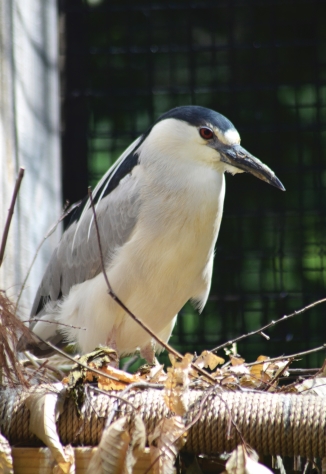Goshawk
Nycticorax nycticorax
| Kingdom | Animalia |
|---|---|
| Phylum | Chordata |
| Class | Aves |
| Order | Pelecaniformes |
| Family | Ardeidae |
| Genus | Nycticorax |
| Species | N. nycticorax |
| Lifespan | up to 21 years |
| Size | 25 inches long |
| Eggs Laid | 3 to 8 eggs |
| Status | Species of least concern |

About Black-crowned Night Herons
What do Black-crowned Night Herons look like?
Black-crowned night herons are medium-sized herons. They appear stocky and hunched over while they roost in trees during the day. They have gray and black plumages on their bodies and crown with long, white head plumes that become erect during courtship displays. Their legs are yellow and short and their eyes are bright red. Male and female night herons look generally the same, except males are slightly larger. Their bills are mostly black.
Where are Black-crowned Night Herons found?
Black-crowned night heron live among marches and shores of both freshwater and saltwater areas. They roost in trees, thickets, or on ground. They are usually found on islands or above water. Black-crowned night heron are found all over the world, with the exception of cold regions in Australia. In North America, they winter in Mexico and parts of the southern United States and breed throughout the United States.
What do Black-crowned Night Herons eat?
Black-crowned night heron eat mostly fish, but they will also feed on squid, crustaceans, insects, frogs, snakes, mollusks, and small rodents. They are also known to feed on eggs and young birds.
Fun Facts!
- Black-crowned night heron eject their stomach contents when approached by any potential threat. This makes it easy for scientists to study the dietary habits of this bird species.
- Black-crowned night heron are dormant during the day; they sit in trees near water in colonies of other birds – not always of the same species – and appear hunched over and motionless. At dusk and at night they are far more active, foraging for food and interacting with other individuals
- Black-crowned night heron are one of seven heron species that use the bait fishing technique. They lure prey by throwing objects into the water and then strike it as it approaches the buoyant object.


























